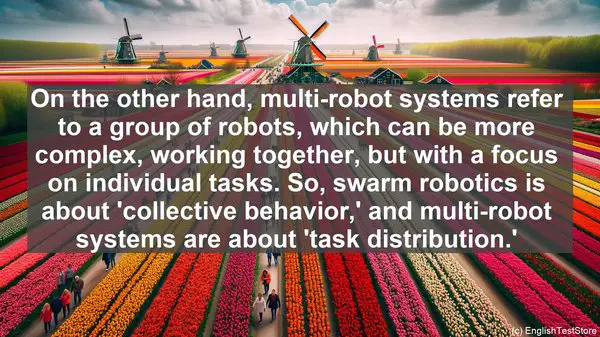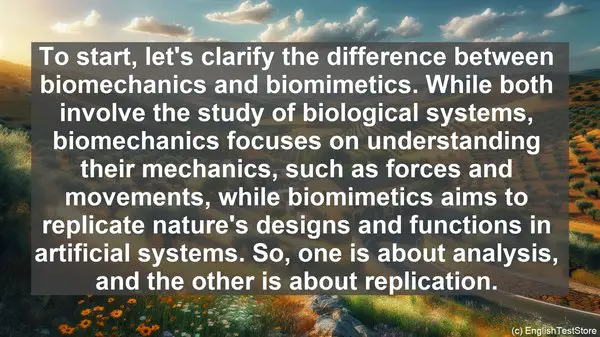Introduction to Biorobotics
Welcome to our educational lesson on biorobotics. Today, we’ll be discussing a topic that often leads to confusion among students: commonly confused words in this field. So, let’s dive right in!

1. Biomechanics vs. Biomimetics
To start, let’s clarify the difference between biomechanics and biomimetics. While both involve the study of biological systems, biomechanics focuses on understanding their mechanics, such as forces and movements, while biomimetics aims to replicate nature’s designs and functions in artificial systems. So, one is about analysis, and the other is about replication.
2. Actuators vs. Sensors
Next, we have actuators and sensors. Actuators are the components responsible for generating movement or force, like muscles in living organisms, while sensors detect and measure various parameters, providing feedback to the system. Think of actuators as the ‘muscles’ and sensors as the ‘senses’ of a biorobot.

3. Closed-Loop vs. Open-Loop Control
Moving on, we encounter the terms closed-loop and open-loop control. Closed-loop control involves continuous feedback, where the system adjusts its actions based on the sensed information. In contrast, open-loop control operates without feedback, following a predetermined sequence. It’s like the difference between driving a car with or without a GPS.
4. Artificial Intelligence vs. Machine Learning
In the realm of biorobotics, artificial intelligence (AI) and machine learning (ML) are often mentioned. AI refers to the broader concept of creating intelligent systems, while ML is a subset of AI, focusing on algorithms that enable systems to learn and improve from data. You can think of AI as the ‘umbrella’ term and ML as one of its ‘branches.’
5. Kinematics vs. Dynamics
Now, let’s differentiate between kinematics and dynamics. Kinematics deals with the study of motion, focusing on position, velocity, and acceleration, while dynamics goes a step further, considering the forces and torques that cause the motion. In simpler terms, kinematics is about ‘how things move,’ and dynamics is about ‘why things move.’
6. Haptic Feedback vs. Tactile Feedback
When it comes to the sense of touch in biorobotics, we encounter haptic feedback and tactile feedback. Haptic feedback refers to the overall sensory experience, including force and tactile sensations, while tactile feedback specifically relates to the perception of surface characteristics, like texture or temperature. It’s like the difference between holding an object and feeling its texture.
7. Teleoperation vs. Telepresence
Now, let’s discuss teleoperation and telepresence. Teleoperation involves controlling a robot from a distance, often in real-time, while telepresence aims to provide a sense of ‘being there’ in the remote environment, immersing the operator. So, teleoperation is about ‘control,’ and telepresence is about ‘immersion.’
8. Exoskeleton vs. Endoskeleton
In the context of robotic structures, we have exoskeletons and endoskeletons. An exoskeleton is an external structure that surrounds and supports the body, like the shell of a crab, while an endoskeleton is an internal framework, like the bones in our bodies. So, exoskeletons are ‘outside’ and endoskeletons are ‘inside.’
9. Bioinspiration vs. Biomimicry
Bioinspiration and biomimicry are terms often used in biorobotics. Bioinspiration involves drawing ideas or concepts from biology, while biomimicry takes it a step further, aiming to replicate nature’s solutions. It’s like the difference between getting inspired by a painting and creating an exact replica of it.
10. Swarm Robotics vs. Multi-Robot Systems
Lastly, let’s clarify the distinction between swarm robotics and multi-robot systems. Swarm robotics involves a large number of relatively simple robots that work together, often with local interactions, to achieve a collective goal. On the other hand, multi-robot systems refer to a group of robots, which can be more complex, working together, but with a focus on individual tasks. So, swarm robotics is about ‘collective behavior,’ and multi-robot systems are about ‘task distribution.’
